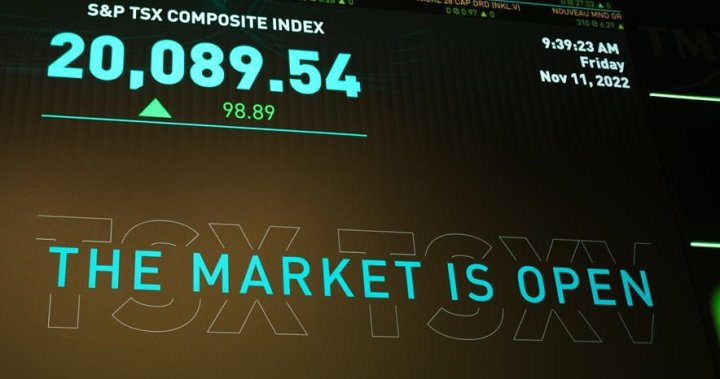Despite the strength in energy stocks, Canada’s main stock index closed down nearly 100 points on Thursday. This decline came as a result of Fitch’s downgrade of the U.S. government’s credit rating from AAA to AA+. Meanwhile, U.S. markets also saw a decrease.
Investors are eagerly awaiting the release of the latest employment reports from both Canada and the U.S. on Friday. Hadiza Djataou, VP and portfolio manager of global bonds at Mackenzie Investments, described it as a significant day.
On Thursday, investors received some economic data, including a report showing a rise in unemployment applications, though they remained relatively low. Additionally, there were signs of a slowdown in the services sector. These factors contributed to the 97.47 point decrease in the S&P/TSX composite index, which closed at 20,120.74.
In New York, the Dow Jones industrial average closed down 66.63 points at 35,215.89. The S&P 500 index ended at 4,501.89 with a decrease of 11.50 points, while the Nasdaq composite closed down 13.73 points at 13,959.71.
Over the past month, investors have been pleased with the fact that inflation has fallen within the target range for central banks, according to Djataou. However, the question remains: what comes next?
Djataou states that the easy part for central banks has been accomplished, but the fight is far from over. In order to achieve the target of bringing inflation back to two percent, it is necessary to determine how high rates need to be. This task is complicated by the fact that certain factors, such as oil prices, are beyond the control of central banks.
Both the Bank of Canada and the Federal Reserve will make their interest rate decisions in September. Regardless of their choice to hike or hold, Djataou believes they will be cautious in their messaging, leaving options open for future hikes while not creating expectations for immediate rate cuts.
“The moment they announce that they are done, the market will start pricing in rate cuts,” Djataou warns, emphasizing that this is not what central banks desire. She also notes that so far, consumers have remained strong, especially in the U.S., where they are less affected by interest rate hikes.
Although the price of oil has climbed above $80 recently, it is still lower than the highs of 2022. Djataou predicts that oil will continue to be influenced by weak global demand despite supply cuts from OPEC plus.
The Canadian dollar traded at 74.90 cents US, slightly lower than the previous day’s rate of 74.99 cents US.
The September crude oil contract increased by $2.06 per barrel, reaching $81.55 per barrel. The September natural gas contract rose by nine cents, reaching $2.57 per mmBTU.
The December gold contract experienced a decrease of $6.20, settling at $1,968.80 per ounce. On the other hand, the September copper contract rose by six cents, reaching $3.90 per pound.
© 2023 The Canadian Press
Denial of responsibility! VigourTimes is an automatic aggregator of Global media. In each content, the hyperlink to the primary source is specified. All trademarks belong to their rightful owners, and all materials to their authors. For any complaint, please reach us at – [email protected]. We will take necessary action within 24 hours.



